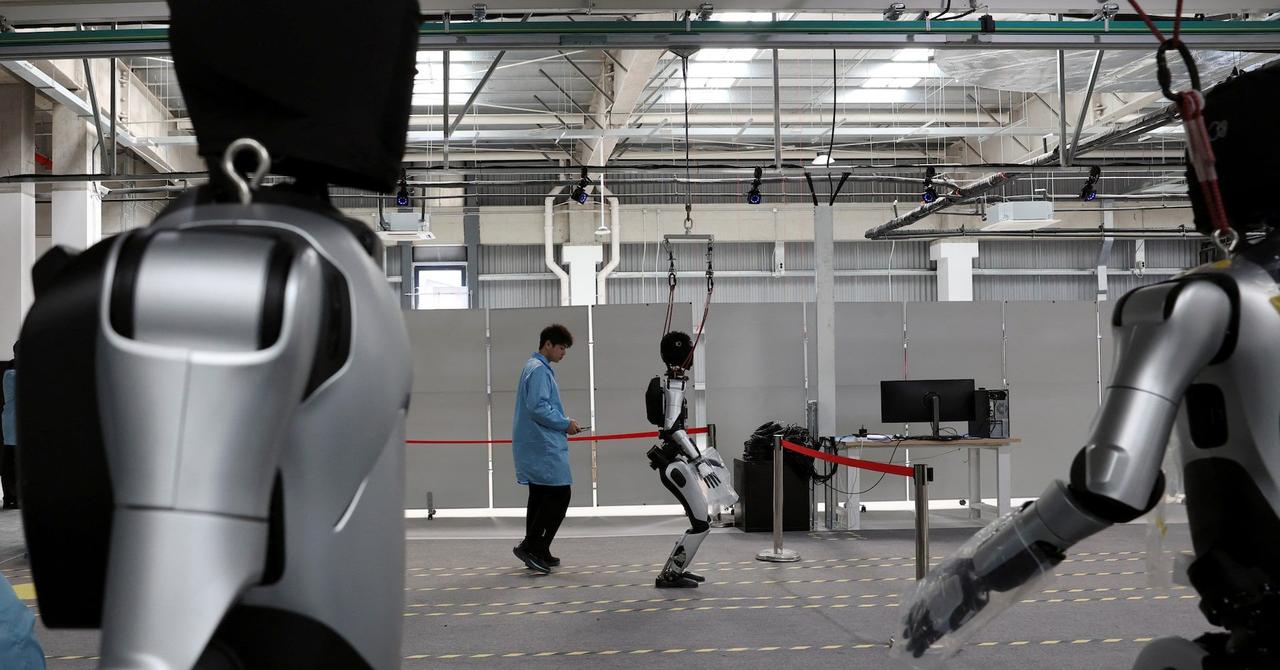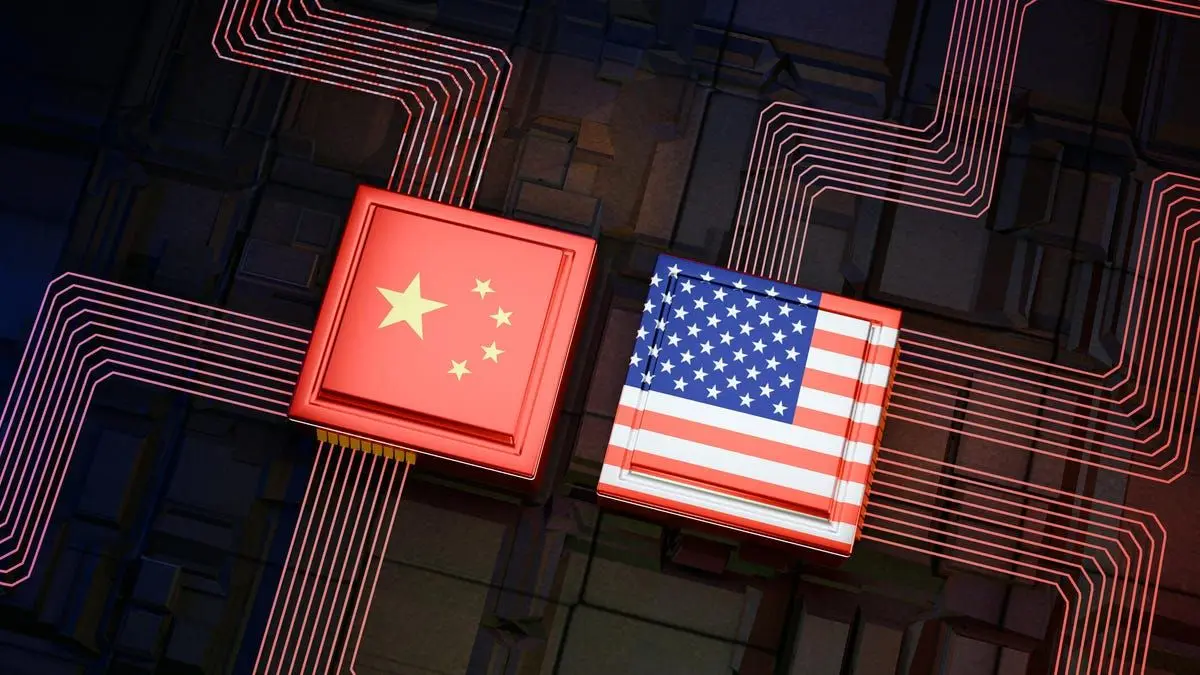Morgan Stanley Report: China's Strategic Advantage in Advanced Robotics and AI
2 Sources
2 Sources
[1]
Morgan Stanley: China Is Maneuvering US "Into Weakness" When It Comes To Making Advanced Robots
This is not investment advice. The author has no position in any of the stocks mentioned. Wccftech.com has a disclosure and ethics policy. Investment bank Morgan Stanley, in a striking report, believes China is playing the long game when it comes to robots. Humanoid robots have gradually permeated the discourse on financial markets, as NVIDIA CEO Jensen Huang and Tesla's Elon Musk continue to remain the technology's biggest promoters. Morgan Stanley is also quite bullish on humanoids, and in its latest research report, the bank lists down key reasons why it believes China is leading the US in the robotic race. While Morgan Stanley's report lists ten key reasons it believes China is rapidly progressing in the race to develop robots, a handful of these merit a deeper look. For starters, the investment bank starts by pointing out China's lead in the rare-earth metals industry. Its estimates show that China commands a 65% share of global rare earth mining and an even larger 85% share of rare earth refining. Rare earth metals, such as yttrium, neodymium, and terbium, are key to the manufacturing of electronics. Amidst President Donald Trump's trade negotiations, China used its dominance in the rare earth supply chain as leverage, with the President announcing earlier that a deal related to these materials had been finalized with the Asian country. Morgan Stanley believes China can "dial the output of the Western manufacturing complex" with its leverage on rare earth metals and secure key advantages to manufacturing robots as well. According to the bank's estimates, the criticism of rare earth metals is further compounded by the fact that new factories are approaching lead times of up to 20 years. Along with refined manufacturing technologies, which are the result of technology transfer from Western firms and indigenous Chinese ideas, Morgan Stanley also believes that the concept of Creative Destruction is helping China in the robotics race. Due to the Chinese government, "every major city and province has its own fund aimed at embodied AI/robotics," says the bank. This support means that Chinese companies are constantly interlocked in a competition where creative ideas from some lead to the destruction of others. The internal competition is "an underappreciated driver of the rapid pace of AI-robot development in China," according to Morgan Stanley. China's aim of fusing advanced technologies into the People's Liberation Army (PLA) is another aspect that's fueling its robotic development, while its "demographic challenges provide a natural incentive to develop technologies in the domain of physical AI," believes the bank. The country is also generating public interest in robotics through conducting public interest events such as marathons, "boxing competitions, and dance performances." According to Morgan Stanley's research, One of the biggest areas where China leads the US, particularly when it comes to manufacturing robots, is vocational education. The bank points out that China had "5 million students enrolled across over 11,000 vocational schools" in 2023, while data from the "National Student Clearinghouse Research Center recently estimated that there are 923k students enrolled in vocational-focused schools," in the US. The remaining three factors are government subsidies, infrastructure and the 'Long Game.' Chinese direct and indirect research and development subsidies, such as a subsidy that allows "manufacturing and high-tech companies to deduct 200% of qualified R&D expenses from their tax bill," can fuel the country's manufacturing industry for robots. Morgan Stanley adds that aggressive Chinese infrastructure investment can also aid its manufacturing industry. The final Chinese advantage, as per the report, is the tendency to play the 'Long Game.' Using the example of the Chinese board game Go, Morgan Stanley believes China's approach is built on "patience and combative coexistence," which leverages carefully maneuvering "one's opponent into weakness" for "an eventual victory through psychological advantage as opposed to direct conflict." The bank comments that Chinese strategic thinking is based on principles dating back to the fifth century BC, while the US "is a much younger country" where social mobility "can skew companies and investors towards short-term thinking, prioritizing immediate results (near-term growth, margin expansion, buybacks, etc.) over long-term strategic planning."
[2]
Morgan Stanley lists 10 reasons why China is leading the robot race By Investing.com
Investing.com -- China is rapidly establishing itself as the frontrunner in the global robot race, according to Morgan Stanley (NYSE:MS) analysts, who cite a confluence of industrial policy, demographic necessity, and long-term strategy. "In our informed opinion, China is in a commanding lead in Physical AI (AVs, Drones, Humanoids, etc.)," Morgan Stanley wrote. "The conspicuous advancement of AI-enabled robots in China is a powerful innovation catalyst for the US." The analysts outlined 10 reasons behind China's potential dominance. First, "China has significant control of the supply of critical magnets used in nearly all mobile machines," with a 65% share of mining and an 88% share of refining of rare earths, argues Morgan Stanley. Second, the PRC's early embrace of "Foreign Technology Transfer" through joint ventures has helped its auto industry "lap the West in terms of tech and efficiency," said the bank. Third, "China's expansive network of Government Guidance Funds" has unlocked "Darwinian forces of internal competition." Fourth, the "Military-Civil Fusion" doctrine ensures dual-use tech advances for both civilian and defense purposes -- "drones are a classic example," writes Morgan Stanley. Fifth, the bank explains that China's "demographic challenges provide a natural incentive" to develop physical AI. Sixth, they state that the country hosts public displays like "robot marathons" to build enthusiasm. Seventh, education is said to play a key role, with Morgan Stanley noting that "China had 35 million students enrolled across over 11,000 vocational schools" in 2023. China also offers aggressive "R&D subsidies," including a 200% 'super deduction' for high-tech expenses. Ninth, "China spent 4.8% of its GDP on domestic infrastructure," the highest globally. And finally, it is seen as a "long game" mindset, rooted in cultural philosophies like Weiqi, that encourages "psychological advantage as opposed to direct conflict." Morgan Stanley concluded: "We believe China EVs are eventually coming to US shores -- it's just a matter of time."
Share
Share
Copy Link
Morgan Stanley's research highlights China's leading position in the global race for advanced robotics and AI, citing ten key factors that give the country a strategic edge over the US.
China's Dominance in Rare Earth Metals
Morgan Stanley's recent report highlights China's commanding position in the global robotics race, with a particular emphasis on its control over rare earth metals. The investment bank estimates that China holds a 65% share of global rare earth mining and an even more significant 85% share of rare earth refining
1
. This dominance gives China substantial leverage in the manufacturing of advanced electronics, including robots.The report suggests that China can "dial the output of the Western manufacturing complex" with its control over these critical materials
1
. This advantage is further compounded by the fact that new rare earth metal factories can have lead times of up to 20 years, making it challenging for other countries to catch up quickly.Government Support and Innovation Ecosystem
Morgan Stanley emphasizes the role of Chinese government support in fostering innovation in the robotics sector. The bank notes that "every major city and province has its own fund aimed at embodied AI/robotics"
1
. This support creates an environment of intense competition among Chinese companies, leading to what Morgan Stanley calls "Creative Destruction" – a process where innovative ideas from some companies lead to the obsolescence of others.The report also highlights China's "Military-Civil Fusion" doctrine, which ensures that technological advancements have dual-use applications for both civilian and defense purposes
2
. This approach accelerates development in areas like drone technology, which has both commercial and military applications.Educational and Demographic Factors
China's educational system plays a crucial role in its robotics advancement. Morgan Stanley reports that in 2023, China had "5 million students enrolled across over 11,000 vocational schools"
1
. This focus on vocational education significantly outpaces the United States, where only about 923,000 students were enrolled in vocational-focused schools.Additionally, China's demographic challenges are seen as a natural incentive to develop technologies in physical AI and robotics
2
. The country's aging population and declining workforce create a pressing need for automated solutions in various industries.Long-Term Strategy and Infrastructure Investment
Morgan Stanley's analysis suggests that China's approach to robotics development is rooted in a long-term strategic mindset. The report draws parallels to the Chinese board game Go, emphasizing patience and the ability to maneuver opponents into weakness over time
1
. This contrasts with what the bank perceives as a more short-term focused approach in the United States.China's infrastructure investments also play a significant role in its robotics advancement. The country reportedly spent 4.8% of its GDP on domestic infrastructure, the highest globally
2
. This aggressive investment in infrastructure is seen as a key enabler for the manufacturing and deployment of advanced robotics technologies.Related Stories
Government Incentives and Public Engagement
The Chinese government's role extends beyond direct funding. Morgan Stanley points out significant R&D subsidies, including a policy that allows "manufacturing and high-tech companies to deduct 200% of qualified R&D expenses from their tax bill"
1
. These incentives encourage continued innovation and investment in robotics and AI technologies.To generate public interest and enthusiasm, China has been organizing events such as robot marathons, boxing competitions, and dance performances
1
. These public displays serve to familiarize the general population with robotics technology and potentially inspire the next generation of innovators.Implications for Global Competition
Morgan Stanley's report suggests that China's advancements in robotics and AI could have significant implications for global technological competition. The bank concludes that Chinese electric vehicles (EVs) will eventually enter the US market, indicating a broader trend of Chinese technological products expanding globally
2
.As the race for advanced robotics and AI intensifies, the report implies that China's strategic advantages could position it as a leader in this crucial technological domain, potentially reshaping global economic and technological landscapes in the coming years.

Source: Wccftech
References
Summarized by
Navi
[1]
Related Stories
Recent Highlights
1
Google launches Gemini 3 Flash as default AI model, delivering speed with Pro-grade reasoning
Technology

2
OpenAI launches GPT Image 1.5 as AI image generator war with Google intensifies
Technology

3
OpenAI launches ChatGPT app store, opening doors for third-party developers to build AI-powered apps
Technology








